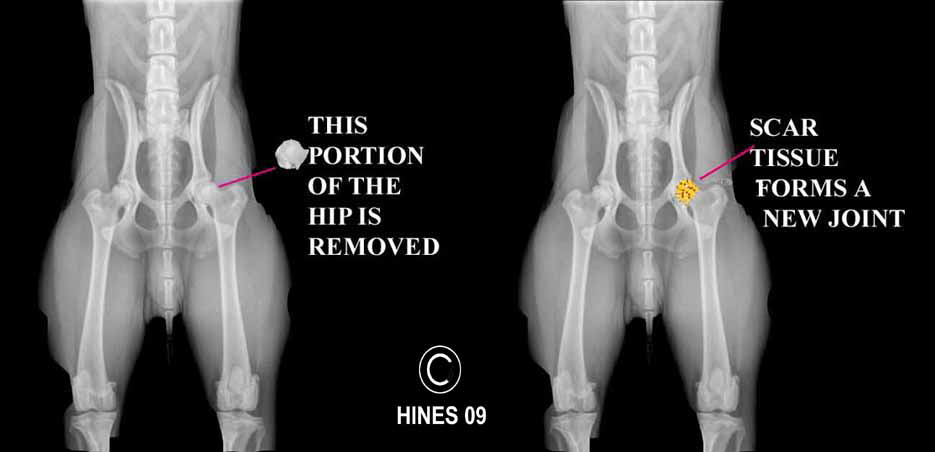Laurie's Blogs.
Oct 2018
The FHO when things aren’t right

This blog was inspired by a conversation with my newest staff therapist. She had a case come in from a local shelter. It was a 3-year-old dog who had had a Femoral Head and Neck Excision 10 weeks ago. The chart notes indicated that the dog was receiving ‘physio’ in-house at the shelter but that because he was not happy being touched that they were doing ‘hands-off physio’. Hmmm… So, the dog was referred to us because they figured he needed a “real physio assessment”. (That quote is real!)
Our Canine Fitness Centre physio found the dog to be very painful with hip extension, and very painful to just lightly palpate his gluteals or quads. He was only toe touch weight bearing. My therapist basically concluded that the dog needed to go back to the surgeon.
And she’s right.
The number one reason that dogs don’t improve after a Femoral Head Ostectomy is that a bone spur is left behind. It’s not easy to get the angle of the cut just right, and if a dog is bigger, it’s even harder.
I’ve seen two or three cases over my career as well, where an FHO was performed in a young growing dog, and they subsequently developed a boney exostosis arising from the stump. One dog had a second surgery, but the boney growth returned. So, in juvenile dogs, I put this into my list of differentials.
What’s important here is to know what’s normal and to make sense of your physical findings.
Most FHO patients should be using their surgical leg partial weight bearing by 2 weeks and at 4 weeks you can be pushing them a bit harder from an exercise standpoint, and at 8 weeks you’re really happy with how they’re doing but might want a bit more to get it to 100%. That’s a normal progression.
With a bone spur, you get pain on extension and perhaps (most likely) an empty endfeel (i.e. the dog expresses pain but you don’t ‘feel’ a tissue restriction). As well the dog won’t weight bear much more than toe touching and won’t improve. No amount of pushing, forcing, cajoling, etc. will improve the dog’s use of the leg. Pain medication won’t have much effect on weight bearing status. All in all, these are your red flags… and it’s the surgeon that needs to deal with it.
I always approach that situation by sending a note back to the referring veterinarians asking for a follow up x-ray. I state that ‘Muffin-Top isn’t progressing in a typical fashion and that I want to rule out a bone spur before forcing her to do more exercises.’ If the vet sends them away without doing an x-ray… then it’s time for the client to find a new vet.
Okay… so, 1) Know your norms, 2) Make sense of your physical exam findings, 3) You should see improvements with most things in at most 3 appointments, and 4) If things aren’t right… send them back.
On that note, have a great week folks!
Cheers, Laurie


